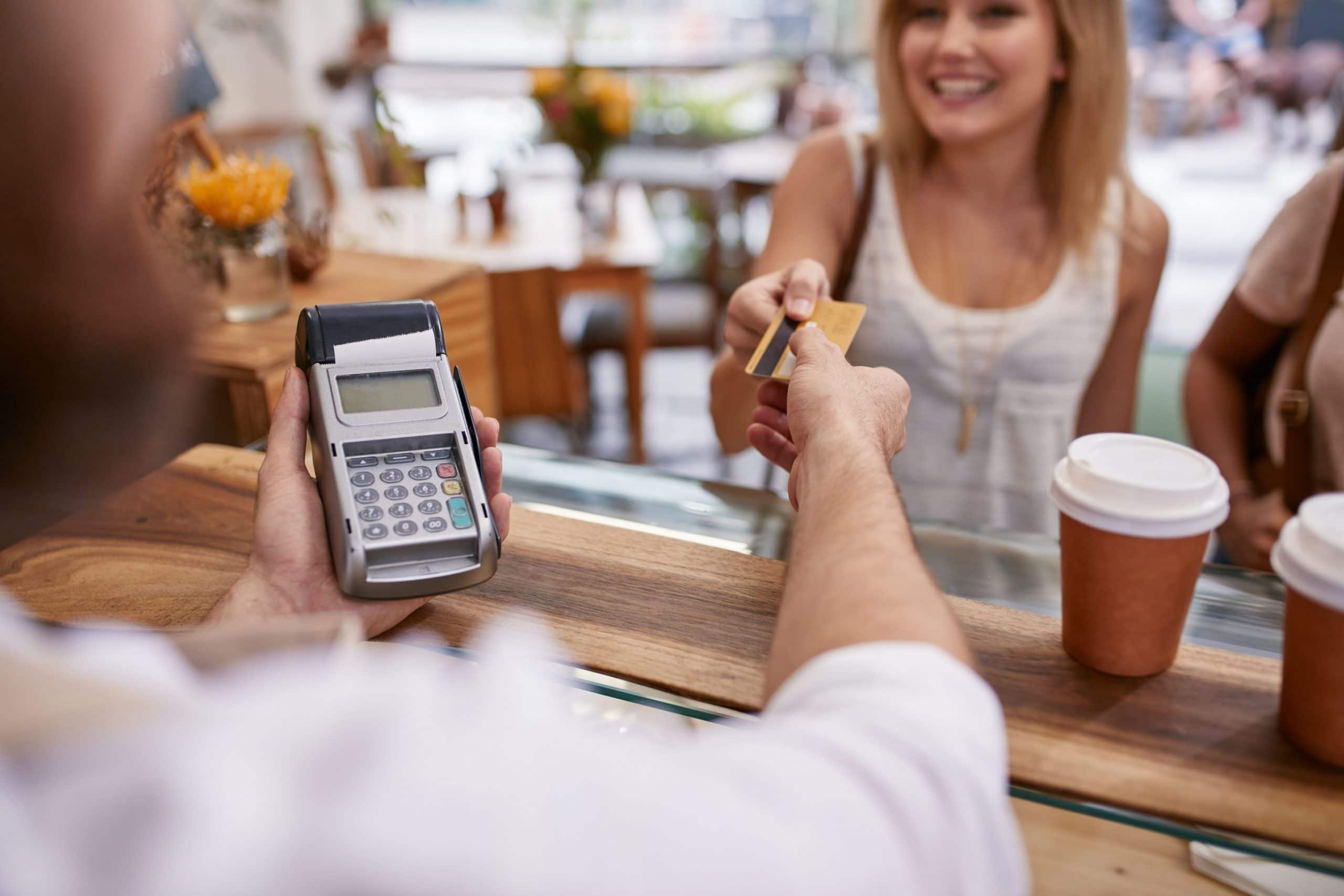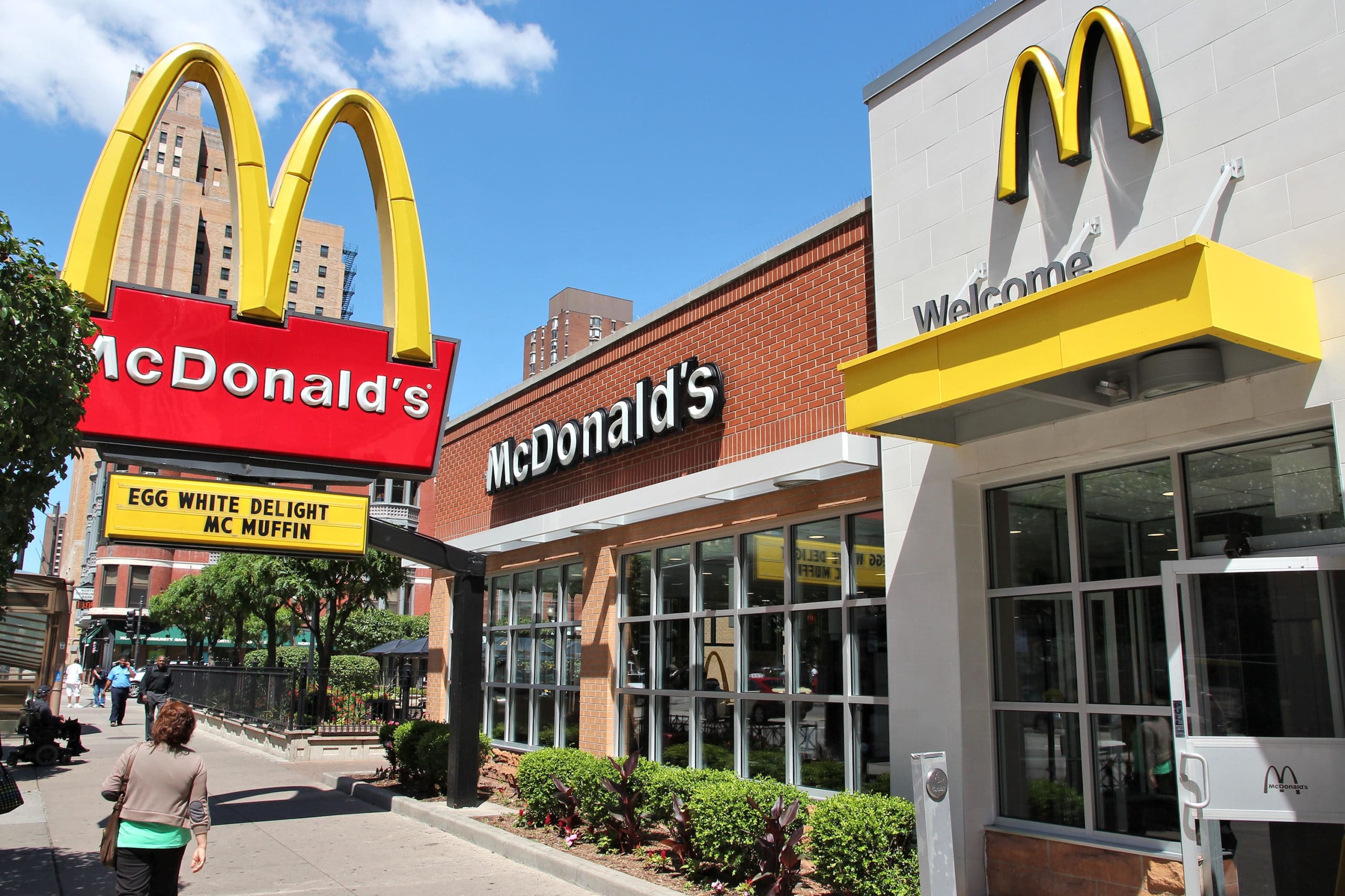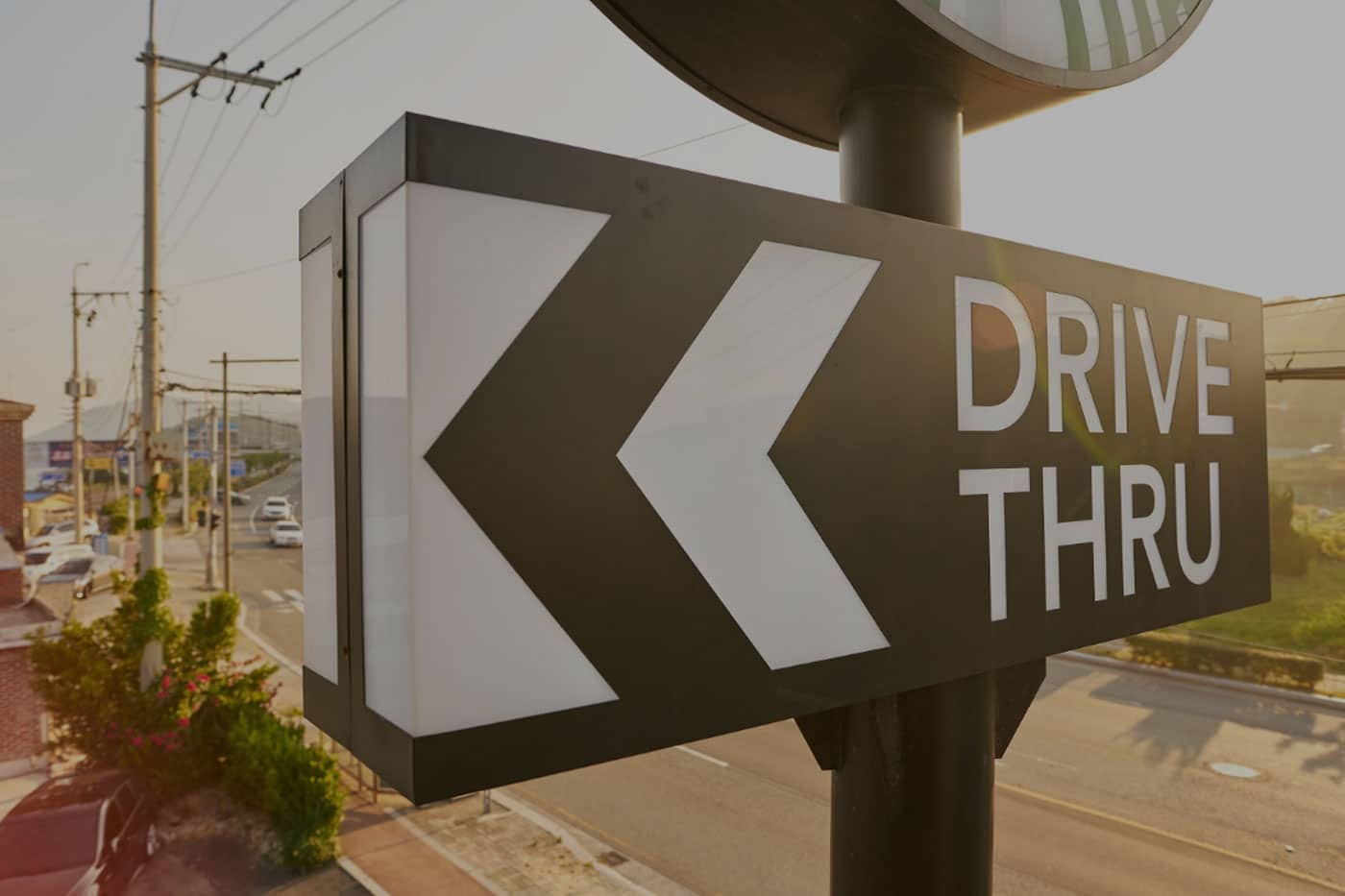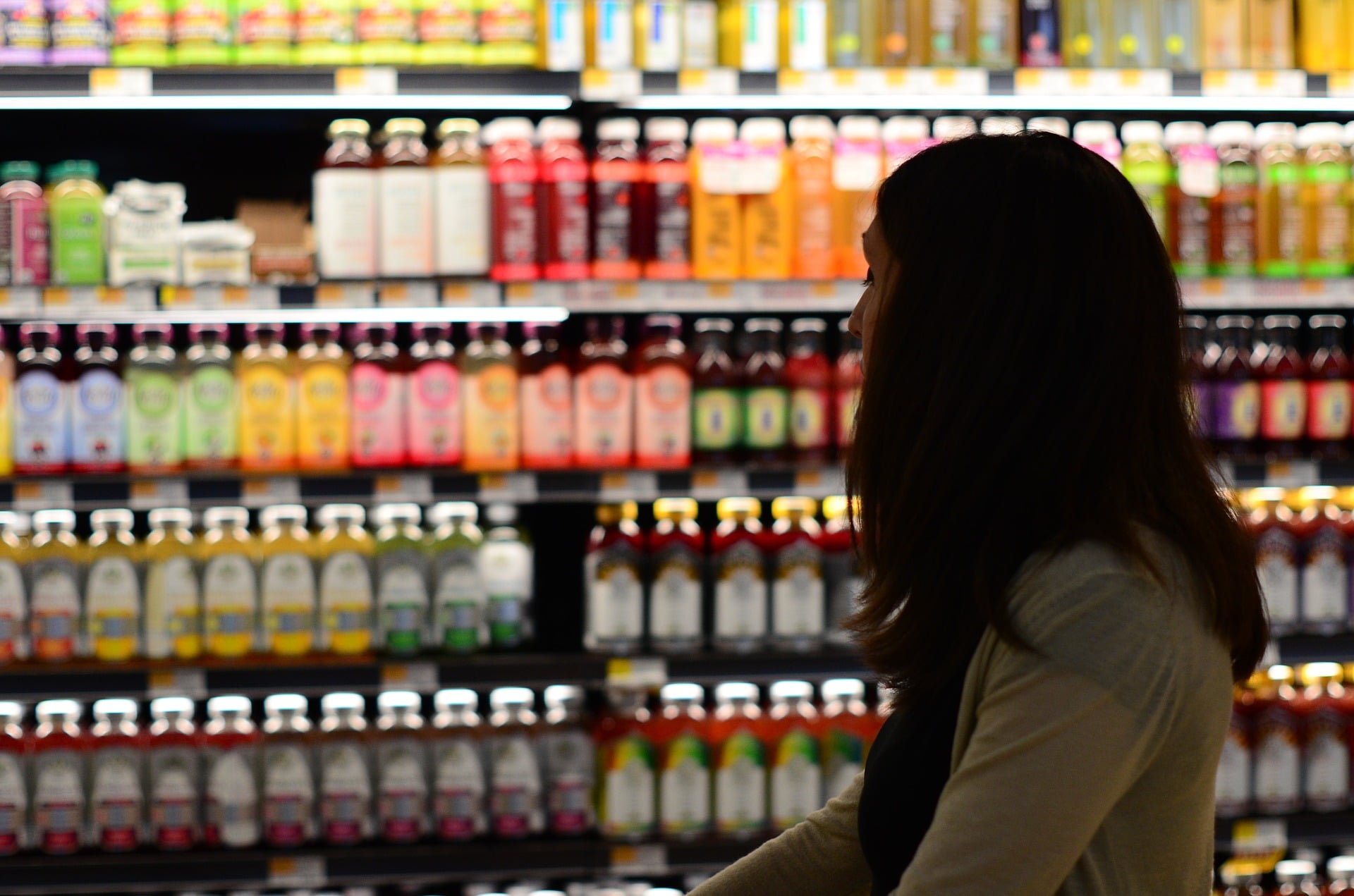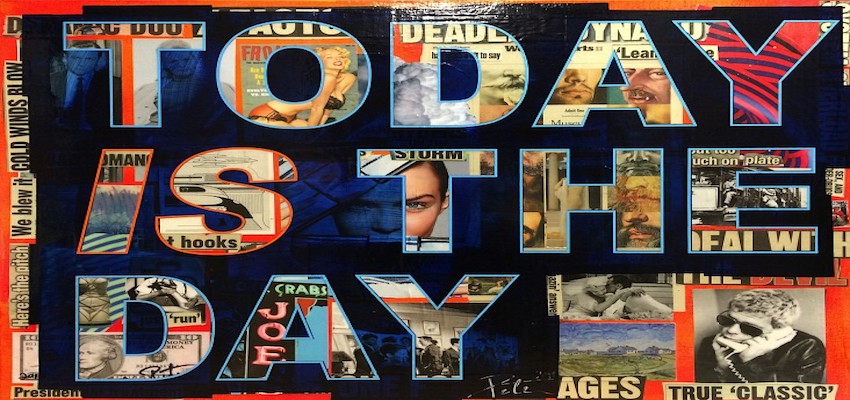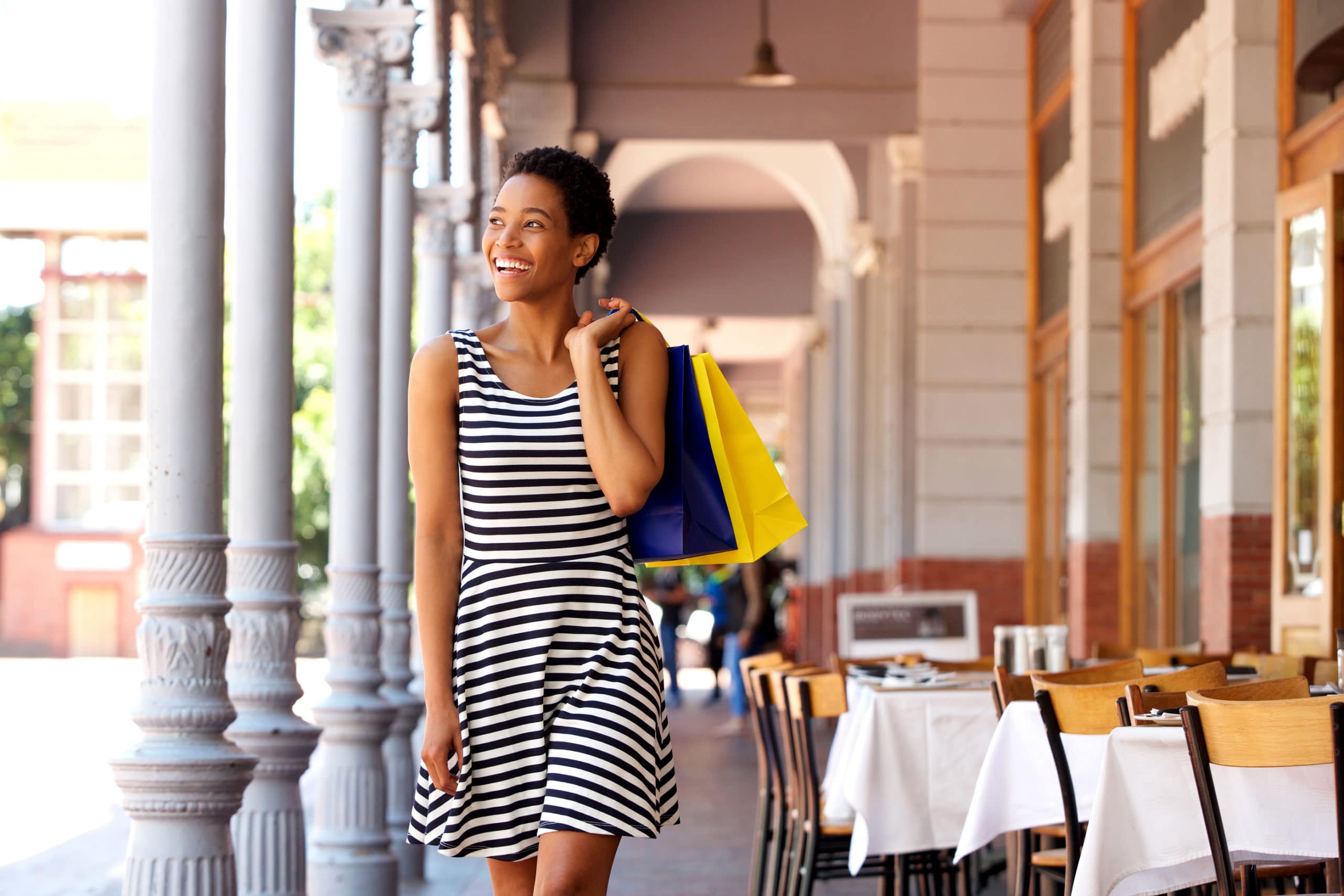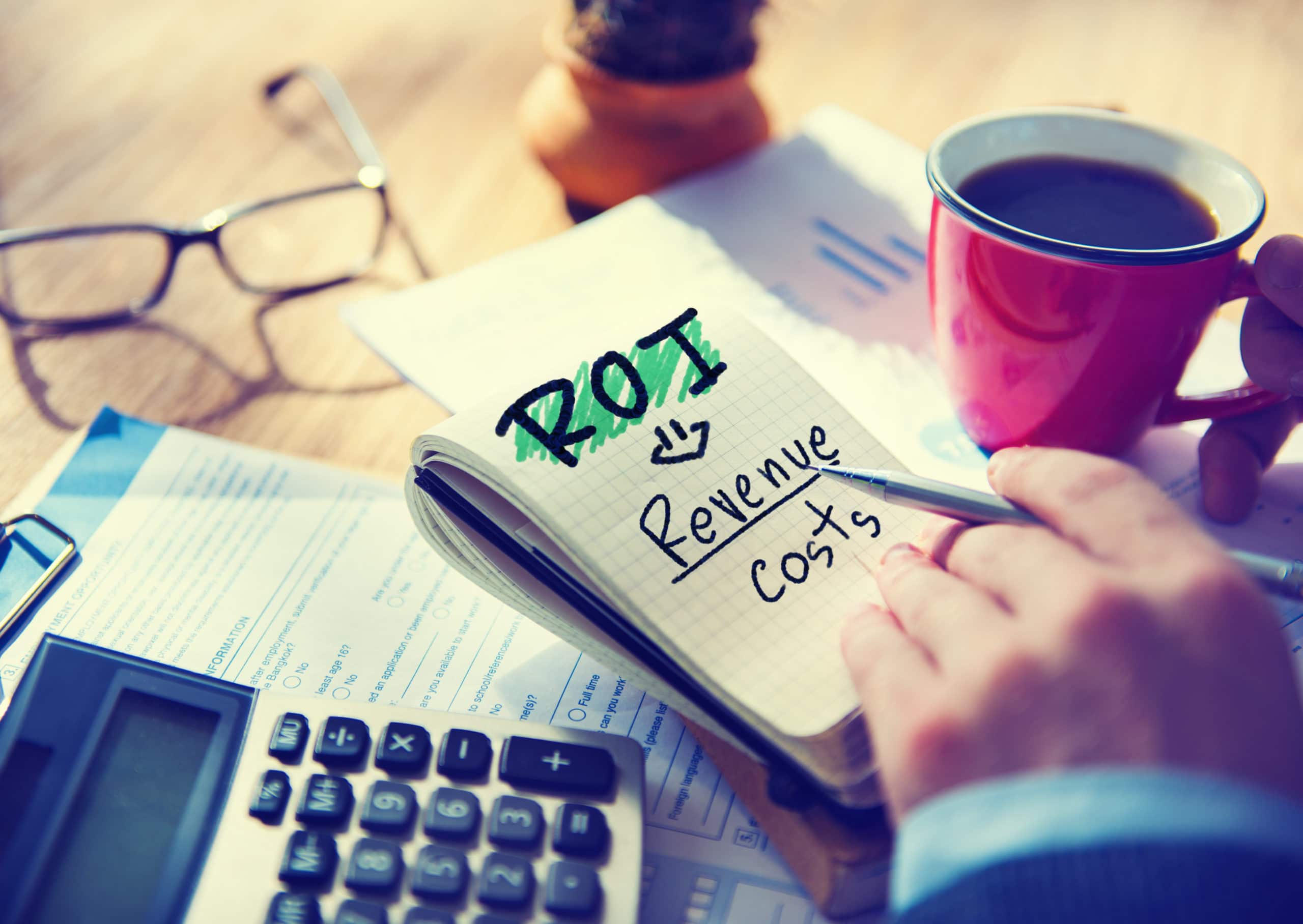Loyalty is a key sales driver for retail stores but many methods of measuring it are ineffective. Continue reading “Measuring the effectiveness of customer loyalty programs in the mobile marketing age”
Category: b2b
Proximity marketing: Best practices for QSR companies
Proximity marketing is a powerful but complicated process for new and established quick service restaurants alike. Continue reading “Proximity marketing: Best practices for QSR companies”
How to increase market share in retail using shopping apps
Consumers’ shopping behaviors are evolving as technology, and specifically apps, continue to give consumers greater access to store and brand information. Continue reading “How to increase market share in retail using shopping apps”
Why the Best QSR Rewards Programs Must Be Mobile
How Retail In-Store Apps Are Reshaping Modern CPG Marketing
Although it’s a hot topic, in-store advertising is not a new or rare practice. Consumer packaged goods (CPG) brands do it all the time since retail spaces are often the best locations for them to grow. Typically this is done by negotiating the best spot on the shelf or by putting up in-store displays and ads. However, it is becoming more common for brands to advertise in-store using mobile apps.
 These apps can interact with beacons within a retail location, delivering offers to the consumer once they are within a certain proximity to the store, working in accordance with GPS tracking. This is particularly effective since 59% of consumers are using their mobile devices while they’re out doing their weekly grocery shopping.
These apps can interact with beacons within a retail location, delivering offers to the consumer once they are within a certain proximity to the store, working in accordance with GPS tracking. This is particularly effective since 59% of consumers are using their mobile devices while they’re out doing their weekly grocery shopping.
While advertising through a mobile app offers a direct line to the customer, it still needs to effectively grab their attention. Brands must find ways to leverage in-store experiences to get consumers interested in trying their products. Finding a unique slant on this is paramount to creating a successful campaign. Luckily, more than a few brands have built effective conversion strategies and have created unique experiences that you can use with your in-store mobile marketing plans.
How Top Brands Leverage In-Store Mobile Advertising
In-store mobile-based marketing is a relatively new marketing avenue, so many brands are approaching this medium with pilots. In-store events, advertisements, and offers have been developed by many different brands with varying levels of success. Additionally, in-store beacon technology is enabling these campaigns to be more successful. These are some of the tactics that the most successful brands use to take advantage of these innovations:
- Exclusive location-based offers: One way that Best Buy drove adoption of its rewards program was by using it to push in-store mobile marketing offers. Consumers who downloaded the app would receive exclusive offers when they went to the store. Once they entered a store, they were also able to unlock rewards points that they could use on purchases and exclusive deals.
- Cross-marketing opportunities: Often, there are in-store marketing opportunities from advertising alongside related products. For example, if you set up a beacon that advertises creamer or sweetener near the coffee aisle, the consumer will have more incentive to purchase it. The consumer may have come into the store to purchase a specific item, but now their app has enticed them to purchase additional products.
- In-store engagement: One thing that can really get consumers involved in-store is to get them to play games or interact with the brand via their mobile device. Ace Hardware does this through in-store sites where consumers are encouraged to text a phrase to them, at which point they receive an offer in return. Their app engages consumers by acting as a virtual scavenger hunt, which can improve conversions.
Using in-store beacons to reach a customer on his or her mobile device increases the likelihood that consumers will try out a new brand. At the very least it drives brand recognition, as in-store mobile experiences are particularly memorable. This is because consumers are engaged in using the app, so they’re more likely to remember the brand than if they were just passively watching television or browsing a website. CPG brands can model their in-store campaigns after those that other successful brands use. This helps ensure that their in-store messages have a lasting impact.
Tips For Building An In-store Campaign
Several brands have already found unique ways to leverage in-store marketing through mobile apps—and more are catching on. Consumers are responding to it too. For example, 70% of consumers in the CPG-focused Mobile Audience Insights Report reported that they decided to purchase a product for the first time after viewing mobile-based advertising. That number has nearly doubled since 2013. Nearly 70% also reported using their mobile device to research a CPG brand prior to purchasing it at a retail location.
Mobile advertising is changing the way that consumers shop, which is why you should change the way you leverage mobile in-store apps. That means creating a campaign that encompasses the following:
- A value-driven approach: Value-driven doesn’t necessarily mean discounts. Instead, it means that the message gives the consumer something, whether it’s a reward, information or simply an enjoyable experience. Basic advertisements have large impacts in-store, but they are not long lasting. However, advertisements that engage the consumer by interacting with your brand tend to have a greater overall impact.
- Proper consumer targeting: In-store advertising still needs to be focused on specific consumers. Consider two different consumers that are shopping in the same store. One is purchasing diapers, baby formula, and wipes. The other is purchasing a frozen pizza and a two-liter bottle of soda. Those purchasing behaviors allow you to draw conclusions in order to properly target the right consumer. So, if your brand is selling disposable baby bottles, then the first consumer is your ideal target. If your brand is selling chips, on the other hand, you’d likely want to target that second consumer. An app with high conversion potential will give you the data you need to make decisions like that.
- Is not heavily focused on discounts: Simply offering one-time coupons via an app may get you a one-time sale, but it’s not a powerful brand converter. Relying too heavily on discounts is a mistake. This is because it generally only attracts price-conscious consumers. It can also lower the way your brand is perceived. In-store apps should leverage rewards rather than discounts as a way of gaining consumer attention.
Mobile in-store advertising is changing the way brands target and convert consumers. This type of advertising allows your brand to follow consumers through their purchase journey, reach them at the right moments, and increase the likelihood that they will try your brand. Several brands have already used this successfully by creating unique personalized and interactive campaigns that pull in users.
As beacon-based advertising technology and mobile geolocation are both relatively new, it’s best to choose to work with a company that already has some understanding of the industry.
One thing that these brands do is leverage partnerships with third-party experts who understand the unique opportunities presented by mobile apps. As beacon-based advertising technology and mobile geolocation are both relatively new, it’s best to choose to work with a company that already has some understanding of the industry. This is where third-party shopping apps come in.
Third-party shopping apps allow you to access these in-store marketing opportunities quickly, without having to create an expensive, long-tailed marketing campaign. These apps also give you access to a database of active users who want to connect with your brand. For any company that wants to make a stronger in-store impact through mobile marketing, third-party platforms are the ideal choice.
Shopkick is a unique shopping app that allows its partners to leverage all of the best parts of in-store mobile advertising. To work with us and increase your in-store conversion, contact our team today.
Image courtesy Pixabay user kc0uvb
3 ways to unlock your greatness
James Smilkstein, Brand Partnerships
Once upon a time, there were creators, and there was an audience. One group led and one group followed. Then the world changed…
I recently had the opportunity to hear from some of the world’s greatest minds. Iconic leaders and experts including Sir Richard Branson, Steve Forbes, Jack Welch, Robin Wright, Simon Sinek, Guy Kawasaki, Malcolm Gladwell and Gary Vaynerchuck took the stage at The Synergy Global Forum in New York City.
This powerful lineup of innovators discussed topics including leadership, purpose, strategy, efficiencies, growth, and marketing. Although each speaker set their own agenda, each speaker shared the same core values demonstrating gratitude, empathy and optimism. These core competencies enabled them to thrive as leading motivators to an audience that was captivated by creativity and the thought of leaving a meaningful legacy.
I encourage readers to embrace the following takeaways as they embrace new challenges seeking a richer sense of fulfillment.
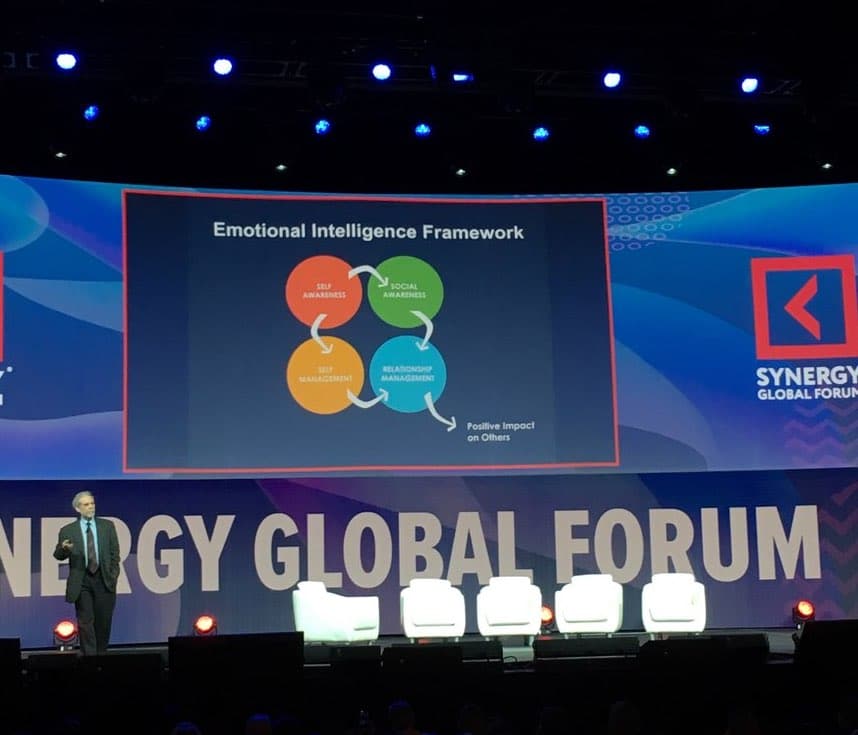
Dr. Daniel Goleman, a psychologist and NY Times bestselling author took the stage to talk about emotional intelligence. He defined this as “the capacity to recognize the impact our own feelings have on ourselves and to tune into the feelings of those around us, to manage our emotions and our actions, and to interact skillfully with the people around us.”
Through his studies he has understood that leaders with emotional intelligence are better equipped to inspire and mobilize others towards making a positive impact in the world. When distinguishing competencies amongst star performers, Dr. Goleman learned that jobs of all kinds comprised of 33% IQ and Technical Skills while 66% leaned in majority favor of emotional intelligence. Among jobs in leadership a slim 15% was factored in IQ and technical skills while a whopping 85% was weighted in emotional intelligence. His theme is simple – a group’s effectiveness is not measured by the sum of IQ’s but rather the level of harmony where they understand their strengths and weaknesses.
Takeaway:
If you want to have an emotionally intelligent conversation with someone, eliminate any distractions. That includes your phone. Focus on the person in front of you. If you ask someone how their weekend was or how they feel, then listen actively. Feel what they feel. Try to understand their strengths/weaknesses. This builds up trust, and as the trust matures so do the open doors for people to take risks. It’s these risks that contribute to a greater level of harmony.
The most energetic of the bunch was Jack Welch. He lit up the stage! As the CEO of General Electric, he grew revenue from $27 billion to $130 billion from 1980 to 2001. Some of his notable quotes included,
- “Find a better way, everyday.”
- “Be positive, it turns people on.”
- “Culture eats strategy for breakfast.”
- And he must have said this at least 6 times, “You want your workplace to be the fun, cool kid’s basement”
What he means is are you making your working environment fun? Is your company the place that everyone wants to be? Do you create a culture that allows people to be themselves so they can thrive? Well at Shopkick, we are for sure the fun cool kid’s basement. Take a look for yourself.
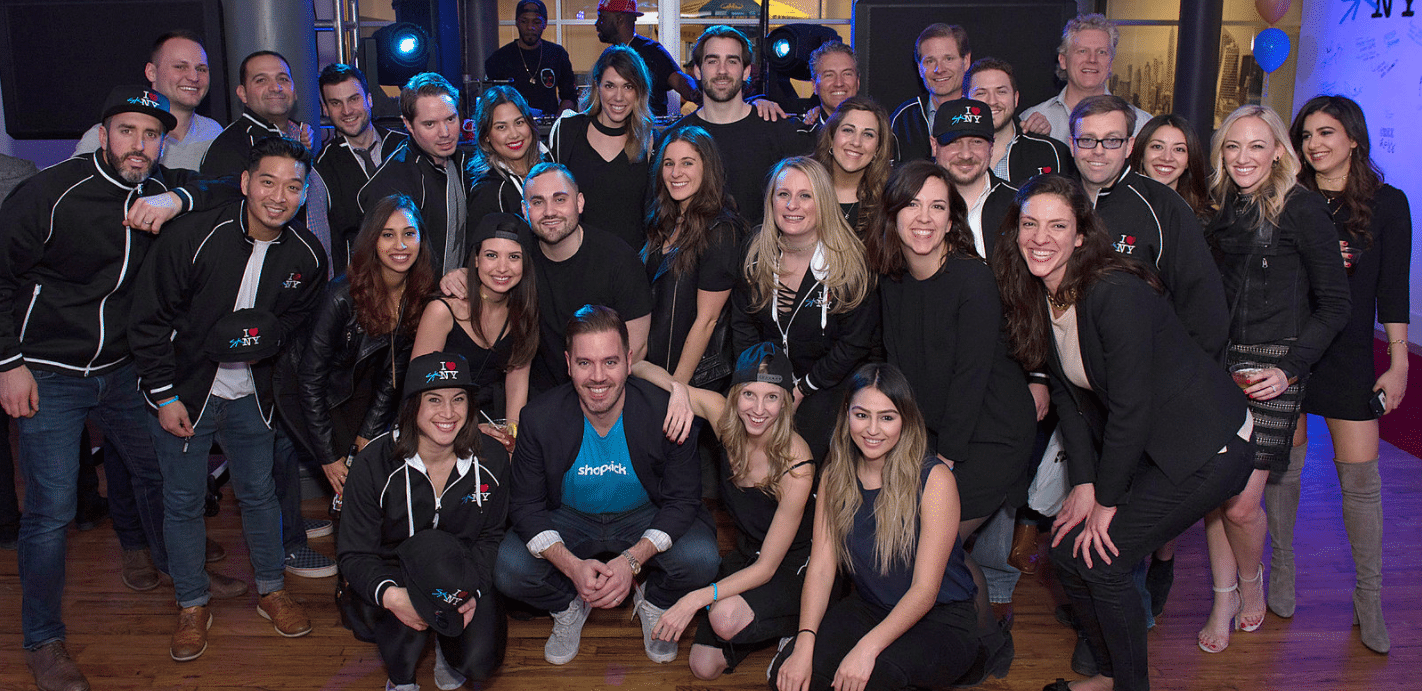
In addition to fostering a positive environment, Welch credits candor for his sustained success. Acting with integrity is your brand. It’s your reputation and what people say about you behind your back is the true reflection of how you make people feel. Whether it’s within the walls of work or not, the ability to be open and honest with people creates trust. A trust that opened the door for empathic interactions, all of which allowed Welch to express his vision that grew the company’s revenue by over 380% during his tenure.
Takeaway:
Trade on your personal brand, your legacy. Doing the right thing, is always the right thing. Celebrate the small victories. Laugh more at company parties as happiness is addicting. Encourage happy hours. Make your workplace and culture the fun, cool kid’s basement.
Last on stage was one of the world’s most distinguished and illustrious entrepreneurs – Sir Richard Branson. Some will say what’s even more impressive than the 400+ ventures he owns, are his awards and accolades including Time magazine’s “Top 100 most influential People in The World”. His perspectives of gratitude, putting people first, and curiosity has and will continue to shape the world.
When asked for his checklist for leaders who create extraordinary companies he’s quoted as “If they are great motivators of people; if they’re always looking for the best in their staff; if they’re praising, not criticizing; and if they create products that people who work for them feel really proud of. … If the leaders are people who listen and don’t always want to hear their own voice; [if] they get ideas from their employees and write them down. “It sounds simple,” Branson said, “but make sure your people are really happy…Leadership is literally being a human being.”
Branson also publicized his 6-word motto that’s been a driver in his prosperous life. “Screw it. Let’s just do it” he said. This attitude comes from his belief that every minute of your life is meant to be enjoyed. Do not spend time and energy towards dreadful feelings of “Ohhh, I’ve got to do this today.”
Takeaway:
Always look for the best in people. When your heart is into it – screw it, just do it. Take one risk a day.
…So the world is changing. Now more than ever groups are collaborating, innovate thinking is leading to actionable execution and the boundary between creators and everyone else is blurring, and will soon disappear altogether. We are all one people and this is our one world. #OneTeamOneDream.

Creative Customer Rewards Program Ideas to Engage New Shoppers
While loyalty is important to maintaining a brand’s current market share, pulling in new leads is the catalyst for true growth. Increasing market share is easier said than done, however, as your company’s goal is the same as millions of other companies—and there are only so many consumers to go around. In a crowded, overly saturated marketplace, your brand must find a way to rise above the static and noise.
Continue reading “Creative Customer Rewards Program Ideas to Engage New Shoppers”
How to Measure Video Advertising ROI: The Metrics Brands Must Know
The brain processes images from photos and videos about 60,000 times faster than it processes text. With stats like that, it’s not surprising that brands want to leverage visual mediums as a powerful way to share their message. In fact, more than half of all marketing professionals state they see a stronger ROI with video advertising than with any other form of marketing campaign.
Continue reading “How to Measure Video Advertising ROI: The Metrics Brands Must Know”
The Mobile Proximity Marketing Advantages and Disadvantages Retailers Must Know
The mobile market is maturing, with 82% penetration anticipated by 2020 in the US. With the majority of adults now with a smartphone in hand, it stands to reason that retailers will want—and need—to leverage these devices to gain foot traffic, sales, and new customers. Continue reading “The Mobile Proximity Marketing Advantages and Disadvantages Retailers Must Know”
The Best Market Share Growth Strategies for Consumer Packaged Goods Companies
The Best Brand Awareness Campaign Ideas for 2018
Is the Average ROI on Mobile Coupon Advertising Strategies Worth the Investment?
Advertising might have seen its fair share of changes over the years but one thing remains consistent: giving customers a deal is probably the first thing marketers think of when they’re trying to get them to try out a new product. As technology has advanced, deals have gone digital, with coupon codes and mobile apps replacing the standard circulars of old. In 2015, 80% of retailers who invested in digital advertising reported they spent at least a portion of their advertising dollars on mobile coupon strategies.
 However, the question needs to be asked if this strategy offers the kind of brand awareness and market growth companies are seeking—or if marketing professionals are erroneously choosing coupon advertising as a marketing mainstay because it appears safe. When we do the math, we can clearly see that the average ROI on mobile coupon advertising isn’t quite as high as many brands may hope.
However, the question needs to be asked if this strategy offers the kind of brand awareness and market growth companies are seeking—or if marketing professionals are erroneously choosing coupon advertising as a marketing mainstay because it appears safe. When we do the math, we can clearly see that the average ROI on mobile coupon advertising isn’t quite as high as many brands may hope.
If you’re considering digital coupon offers as an aspect of your brand’s growth strategy, you must first consider the potential cost, which includes not only the cost of the discount that will inevitably cut into your bottom line but also the cost of implementing the program, converting consumers to buyers, and paying for the technical aspects of the program. These combined costs have the potential to make that seemingly safe marketing bet decidedly less so—especially when there are more profitable options that have the ability to maximize conversions while limiting campaign costs, both incidental and direct.
Calculating the Average ROI on Mobile Coupon Advertising
Calculating the ROI on mobile coupon advertising is challenging as you can’t always obtain the most accurate numbers until after you have run the campaign. One thing you can’t argue, though, is that coupons are effective for at least a one-time conversion, as 79% of consumers report that they have tried a new brand based on receiving an offer. However, that one-time conversion might actually come at a loss.
Here’s what you must consider when calculating the potential return on investment of mobile coupons for your brand:
- The price of your featured product: This is the amount the consumer pays for your product.
- The cost of the discount: This is the immediate cost to your company for selling the product at a discount.
- The cost of the campaign: The is the overall amount you pay to make consumers aware of the coupon deal.
- The number of times redeemed: This is how many times your coupons are used at purchase.
- The campaign cost per redemption: This is the cost of the campaign divided by the number of times your coupon is redeemed.
Additionally, it should be noted that while the average redemption rate for mobile offers is 25%, the actual redemption rates of the coupon can cause your costs to fluctuate significantly, as you cannot successfully predict how many consumers will use your coupon. And, mobile coupons have some unique traits that limit their effectiveness over the long term, meaning you may not be making up that loss with future purchases at full cost.
Issues that Reduce Mobile Coupon Impact and ROI
When a company chooses to implement a mobile couponing strategy, they’re often seeking out ways not only to make an immediate profit but to increase market share. However, this isn’t always as effective as brands may hope for a number of significant reasons:
- Mobile coupon advertising comes at an immediate cost: Taking a loss, even a small one, when trying to sell a CPG product is a risky strategy. Right out of the gate, you’ve already cut into your bottom line by reducing your product’s price—with no guarantee it will pay off in the end.
- Product perception may be harmed: There’s a reason why high-end brands don’t focus heavily on discounts; consumers often equate low-cost with low-quality. This is an issue for brands as quality is quickly becoming a brand differentiator. Reducing your price can reduce the perception of that quality—and 86% of consumers report they’re willing to pay more for better quality, across industries.
- It may not accurately target the right audience: Consumers who seek out discounts tend to be price-focused. That means that when they’re looking for a new product to purchase, they’re not going to use loyalty as a basis for purchase, but price. Unless you discount the product every time they buy, you can’t hope to gain return customers over the long-term.
Mobile coupons may be trendy with consumers, but many brands will find themselves disappointed by the ROI and long-term impact of such campaigns. They can be quite costly and, when your goal is to gain greater market share, they lack longevity. Most of these mobile couponers will only stay with your brand until the offer is redeemed. For a longer tail option that keeps consumers coming back, mobile shopping apps that offer rewards may be the best alternative.
Using Mobile Shopping Apps as an Alternative to Coupon Programs
Coupons are limited in their long-term impact for your brand because they are only used once. As an alternative, shopping apps that offer points that build into valuable rewards are used repeatedly by the consumers who download them, automatically giving this strategy an edge over coupons.
They work by connecting brands with consumers as they’re ready to make a purchase. About 60% of shoppers use their phones to find products before they buy. Therefore, partnering your brand with mobile shopping apps can significantly increase the likelihood of your products being discovered as the users of these apps tend to be very actively engaged.
Another unique benefit of these platforms is in the way they allow your brand to track and influence consumer behavior. With coupon-based programs, the only individual habits you can track are from those consumers who actually redeem your coupon. With a shopping app, however, you’re better able to pinpoint what’s trending in the consumer’s space with real-time data. This allows a much more diverse market sample that can be highly valuable if your brand’s primary selling point isn’t its price but its quality.
Finally, as mentioned, some shopping apps – like Shopkick – offer rewards, not discounts. These apps work by creating brand awareness through strategically timed notifications that increase the likelihood of purchase, much like a coupon does, but without the need to offer a discount.
When you consider the relatively short shelf life of mobile coupon-based strategies, as well as the surprisingly high cost, you may find that the ROI simply cannot justify a coupon campaign for your company. Coupon-based programs often don’t target the right consumers and they can cost your brand not only its limited marketing dollars but also its reputation by lowering its perceived value. Mobile shopping apps, however, can follow your consumer throughout their purchase pathway, helping you create timely opportunities for brand interaction. That interaction breeds growth, ultimately resulting in a greater share of the market for your brand.
At Shopkick, we offer our partners the ability to connect with their target audience without implementing costly coupon campaigns. If you’re interested in partnering with our solution to increase your company’s market share, brand awareness, and customer engagement, contact our team today.
Image courtesy Rawpixel.com

